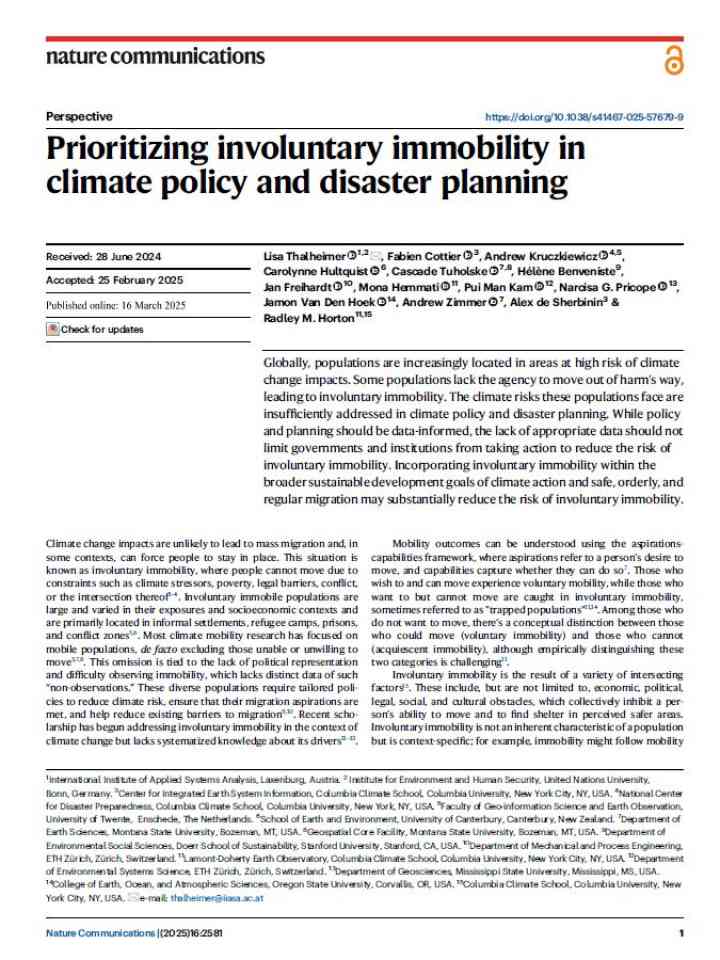Prioritizing involuntary immobility in climate policy and disaster planning
This paper argues that policies and services that can anticipate climate disasters can better support potentially immobile populations and mitigate the conditions driving such a shift in the context of climate change. Globally, populations are increasingly located in areas at high risk of climate change impacts. Some populations lack the agency to move out of harm’s way, leading to involuntary immobility.
The climate risks these populations face are insufficiently addressed in climate policy and disaster planning. While policy and planning should be data-informed, the lack of appropriate data should not limit governments and institutions from taking action to reduce the risk of involuntary immobility. Incorporating involuntary immobility within the broader sustainable development goals of climate action and safe, orderly, and regular migration may substantially reduce the risk of involuntary immobility.
